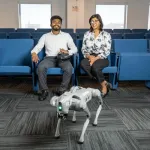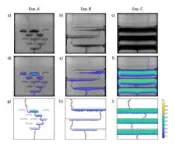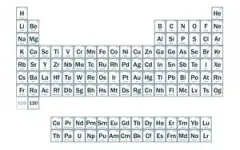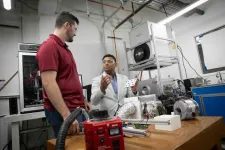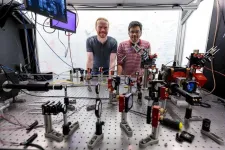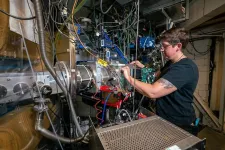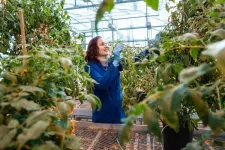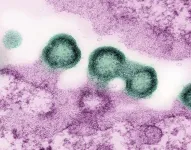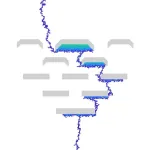(Press-News.org) An international collaboration seeks to innovate the future of how a mechanical man’s best friend interacts with its owner, using a combination of AI and edge computing called edge intelligence.
The project is sponsored through a one-year seed grant from the Institute for Future Technologies (IFT), a partnership between New Jersey Institute of Technology (NJIT) and Ben-Gurion University of the Negev (BGU).
Assistant Professor Kasthuri Jayarajah in NJIT’s Ying Wu College of Computing is researching how to design a socially assistive model of her Unitree Go2 robotic dog that will dynamically adapt its behavior and nature of interactions based on the characteristics of the people with whom it interacts.
The overarching project goal is to make the dog come “alive” by adapting wearable-based sensing devices that can detect physiological and emotional stimuli inherent to one’s personality and traits, such as introversions, or transient states, including pain and comfort levels.
The invention will have an impact on home and healthcare settings in battling loneliness in the elderly population and be an aid in therapy and rehabilitation. Jayarajah’s initial work where robotic dogs understand and respond to gestural cues from their partners will be presented at the International Conference on Intelligent Robots and Systems (IROS) later this year.
Co-principal investigator Shelly Levy-Tzedek, associate professor in the Department of Physical Therapy at BGU, is an experienced researcher and leader in rehabilitation robotics, with a focus on studying the effects of age and disease on the control of the body.
The researchers note that wearable devices are increasingly accessible, and everyday models such as earphones can be repurposed to extract wearers’ states such as brain activity and micro expressions. The project aims to combine such multimodal wearable sensors with traditional robot sensors (e.g. visual and audio) to objectively and passively track user attributes.
According to Jayarajah, while the concept of socially assistive robots is exciting, long-term sustained use is a challenge due to cost and scale. “Robots like the Unitree Go2 are not yet up for big AI tasks. They have limited processing power compared to big GPU clusters, not a lot of memory and limited battery life,” she said.
Initial steps in the project include building on traditional sensor fusion, as well as exploring carefully designed deep-learning based architectures that will assist in developing commodity wearable sensors for extracting user attributes and adapting motion commands.
END
Researchers leveraging AI to train (robotic) dogs to respond to their masters
2024-07-23
ELSE PRESS RELEASES FROM THIS DATE:
Drawing water from dry air
2024-07-23
Earth’s atmosphere holds an ocean of water, enough liquid to fill Utah’s Great Salt Lake 800 times.
Extracting some of that moisture is seen as a potential way to provide clean drinking water to billions of people globally who face chronic shortages.
Existing technologies for atmospheric water harvesting (AWH) are saddled with numerous downsides associated with size, cost and efficiency. But new research from University of Utah engineering researchers has yielded insights that could improve efficiencies and bring the world one step closer to tapping the air as a culinary water source in arid places.
The study unveils the first-of-its-kind ...
Combining trapped atoms and photonics for new quantum devices
2024-07-23
Quantum information systems offer faster, more powerful computing methods than standard computers to help solve many of the world’s toughest problems. Yet fulfilling this ultimate promise will require bigger and more interconnected quantum computers than scientists have yet built. Scaling quantum systems up to larger sizes, and connecting multiple systems, has proved challenging.
Now, researchers at the University of Chicago’s Pritzker School of Molecular Engineering (PME) have discovered how to combine two powerful technologies—trapped atom arrays and photonic devices—to ...
A new way to make element 116 opens the door to heavier atoms
2024-07-23
Scientists at the Department of Energy’s Lawrence Berkeley National Laboratory (Berkeley Lab) are credited in the discovery of 16 of the 118 known elements. Now they’ve completed the crucial first step to potentially create yet another: element 120.
Today, an international team of researchers led by Berkeley Lab’s Heavy Element Group announced that they have made known superheavy element 116 using a titanium beam, a breakthrough that is a key stepping stone towards making element 120. The result was presented today at the Nuclear Structure 2024 conference; the science paper will be posted on the online repository ...
New genetic tool could identify drug targets for diseases associated with metabolic dysfunction
2024-07-23
There’s a glaring gap in our knowledge of cell metabolism: in many cases, we still don’t know exactly how nutrients are transported into the cell. Without that understanding, it’s extremely difficult, if not impossible, to develop treatments for the many diseases linked to the protein transporters that drive metabolism. Now, a new study in Nature Genetics presents a tool to map these metabolic gene functions more precisely. The platform, dubbed GeneMAP, has already identified one key gene-metabolite association at the heart of mitochondrial metabolism.
GeneMAP was developed in the laboratory of Kivanç Birsoy, ...
Plant Biologist Siobhan Brady named HHMI Investigator
2024-07-23
iobhan Brady, a professor in the Department of Plant Biology and Genome Center at the University of California, Davis, has been selected as a Howard Hughes Medical Institute (HHMI) Investigator. The prestigious Investigator program, which Brady describes as “life changing,” will provide her with roughly $9 million in research support over a seven-year term, with the option to renew.
Brady’s research aims to understand how plants use their roots to respond to environmental stressors, and to use this information to develop plants that are better able to respond to climate ...
Long-acting injectable cabotegravir for HIV prevention is safe in pregnancy
2024-07-23
Long-acting injectable cabotegravir (CAB-LA) was safe and well tolerated as HIV pre-exposure prophylaxis (PrEP) before and during pregnancy in the follow-up phase of a global study among cisgender women. The analysis of outcomes from more than 300 pregnancies and infants will be presented at the 2024 International AIDS Conference (AIDS 2024) in Munich, Germany.
“Cisgender women experience biological changes and social dynamics that can increase their likelihood of acquiring HIV during pregnancy and the postnatal period, and we need to offer them evidence-based options when they may need them most,” said Jeanne Marrazzo, M.D., M.P.H., ...
Large language models don’t behave like people, even though we may expect them to
2024-07-23
CAMBRIDGE, MA – One thing that makes large language models (LLMs) so powerful is the diversity of tasks to which they can be applied. The same machine-learning model that can help a graduate student draft an email could also aid a clinician in diagnosing cancer.
However, the wide applicability of these models also makes them challenging to evaluate in a systematic way. It would be impossible to create a benchmark dataset to test a model on every type of question it can be asked.
In a new paper, MIT researchers took a different approach. They ...
NREL researchers highlight opportunities for manufacturing perovskite solar panels with a long-term vision
2024-07-23
Researchers working at the forefront of an emerging photovoltaic (PV) technology are thinking ahead about how to scale, deploy, and design future solar panels to be easily recyclable.
Solar panels made of perovskites may eventually play an important role amid global decarbonization efforts to reduce greenhouse gas emissions. As the technology emerges from the testing stages, it is a perfect time to think critically about how best to design the solar panels to minimize their impact on the environment decades from now.
“When you have a technology in its very early stages, you have the ability to design it better. It’s a cleaner slate,” said Joey Luther, a senior ...
Top Medicare advantage plans less available in disadvantaged areas
2024-07-23
Looking for a Medicare Advantage plan with a five-star quality rating? You’re less likely to find one available to you if you live in a county with higher poverty and unemployment, finds a new study published in JAMA Network Open.
These geographic disparities may be contributing to unequal health outcomes and limiting federal funds from reaching the regions most in need, according to the researchers.
“What this means is that Medicare beneficiaries living in counties with greater social disadvantage ...
Better carbon storage better carbon storage with stacked geology with stacked geology
2024-07-23
The overarching goal of all carbon capture and storage projects is the same: Keep carbon dioxide (CO2) emissions out of the atmosphere by storing them in the subsurface for good.
One way to do that is to inject the CO2 into a reservoir space that’s covered with a big lid – an impermeable caprock that can keep the gas in place and stop any upward flow in its tracks. That’s the model that petroleum exploration has relied on for decades when searching for oil traps, and it works for both oil and CO2. But according to research led by The University of Texas at Austin’s Bureau of Economic Geology, subsurface ...
